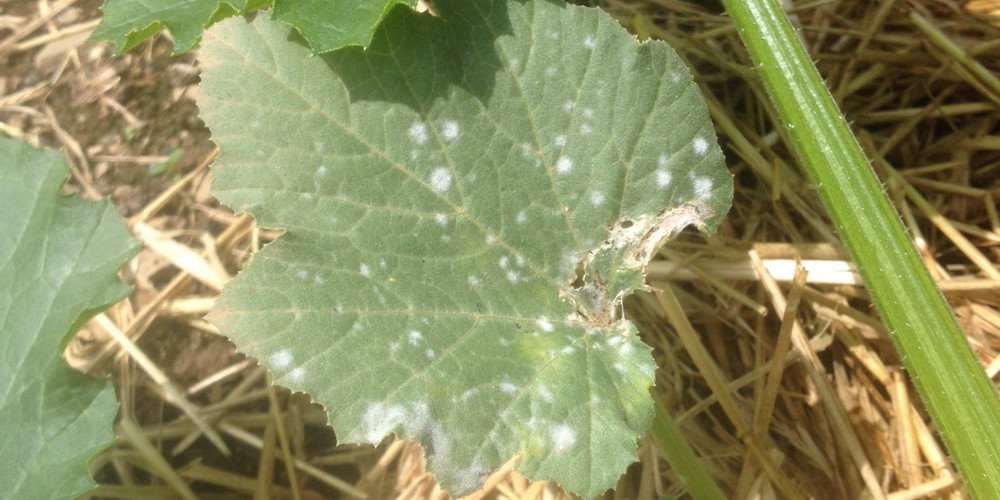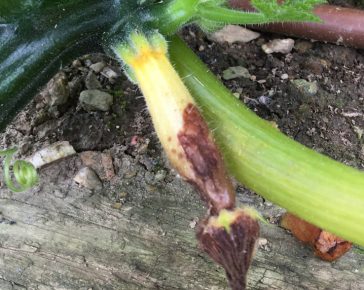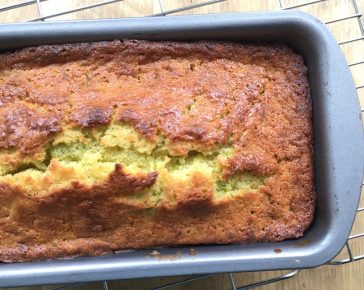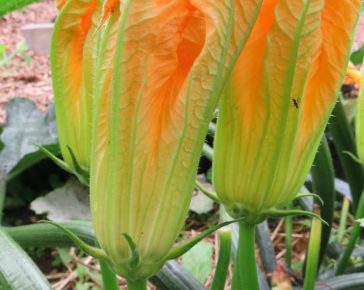Powdery Mildew is a fairly common fungal disease that you might have seen on the leaves of your courgette plants. It affects lots of other plants too, like pumpkins, squash, cucumbers and peas. It is easily recognisable by the white patches that start appearing on the leaves and soon spread. Here’s the lowdown on powdery mildew…
The cause of powdery mildew
The main cause of powdery mildew is a lack of water, particularly if this is then followed by a bit of water logging. It’ll often happen when a dry spell is followed by a downpour of British Summer proportions. You will find that towards the end of the season, in early autumn, most courgette plants are affected naturally as the foliage begins to die back. This is nothing to worry about and a very natural part of the plants’ lifecycle.
How to avoid powdery mildew
To prevent powdery mildew from taking hold too early in the season, we recommend three things. Firstly, make sure your courgette plants have good drainage to prevent any water logging. Secondly, when it’s dry, be sure to give them plenty of water, regularly, and apply a mulch to prevent the soil from drying out. The final thing to do is ensure they have enough space for the air to circulate. This is where plant spacing comes in – if they’re a little close together then you could move one to give the others more space. 1 metre between plants is a good spacing.
How to treat powdery mildew
If you already have powdery mildew on your courgettes, or any other plant, don’t panic. As long as they’re not too badly affected then you should still get a decent crop from them.
If the plant is very badly affected, cut off any badly affected leaves to help prevent the mildew from spreading. The newer leaves in the centre of the plant will hopefully be growing through nice and green. If there are still affected leaves, to treat the problem organically you could try mixing one part milk to nine parts water and spraying the leaves lightly on a warm, dry day. Make sure it’s done in the morning, not the evening. Leave it for a couple of weeks and then repeat. It’s not 100% effective, but it’s worth a try.




